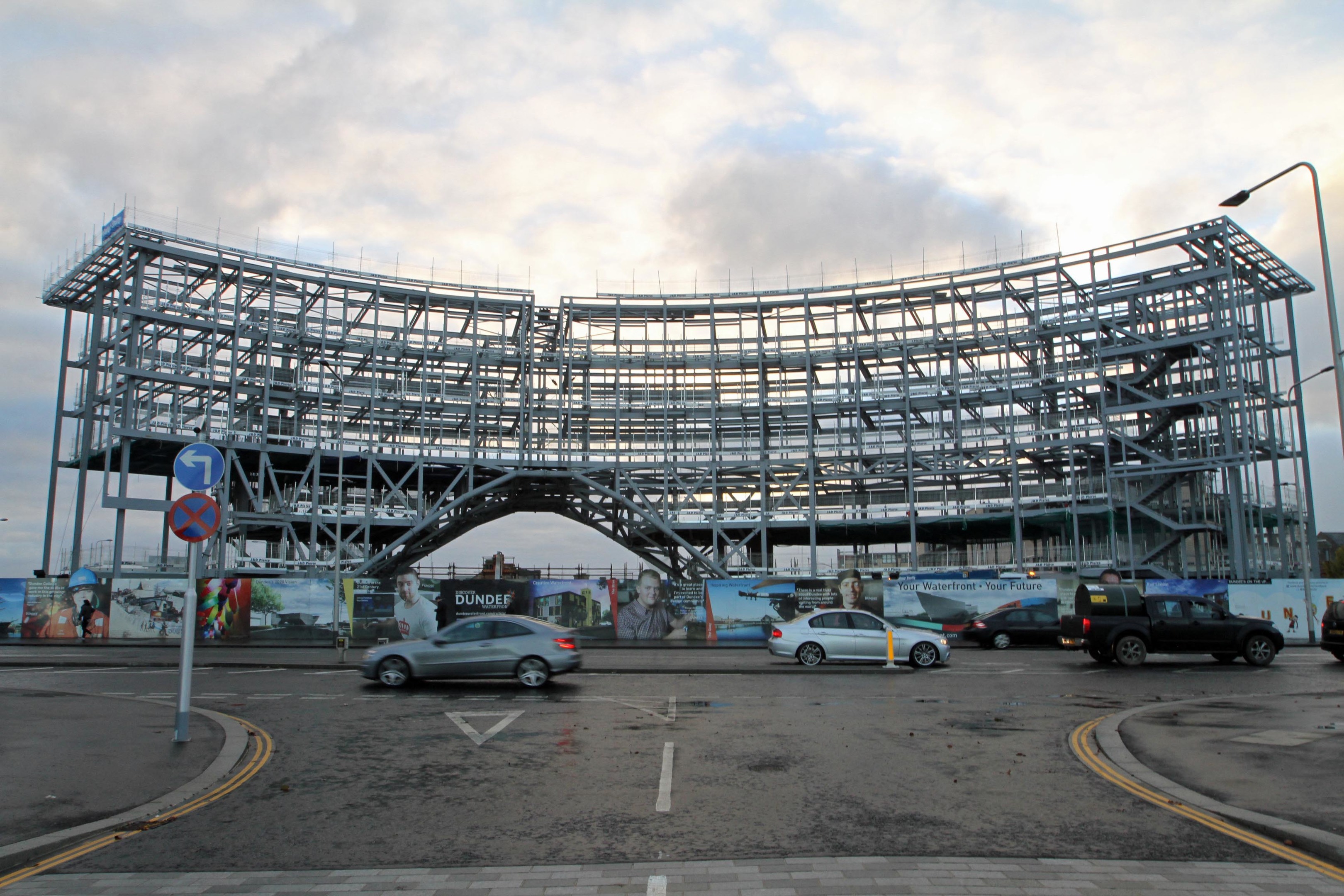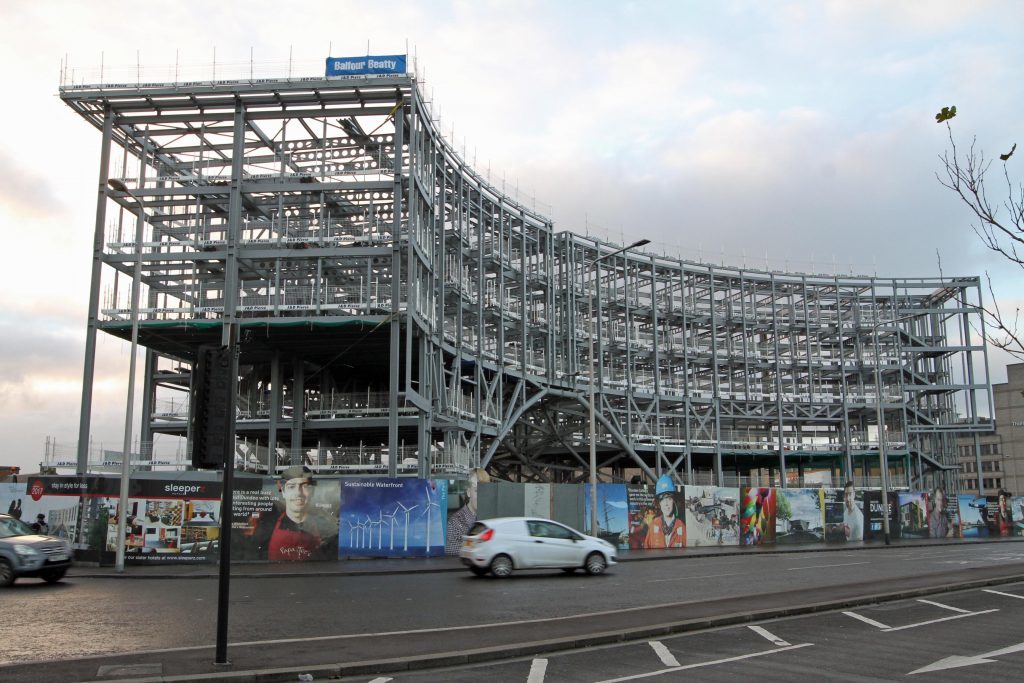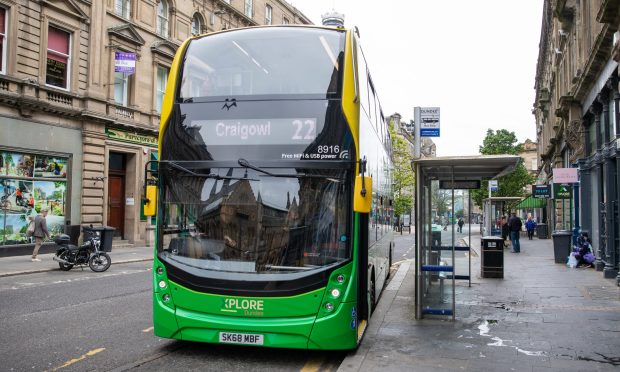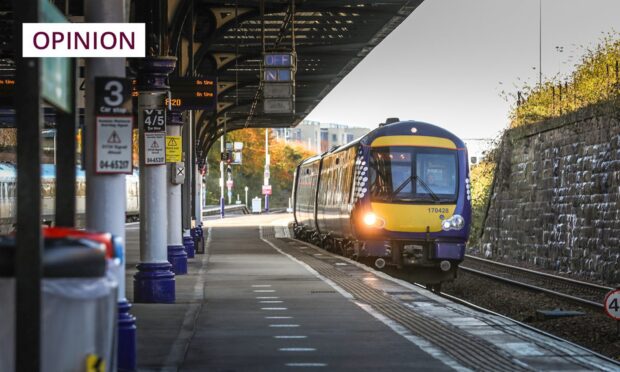Scotland’s railways are undergoing a radical reinvention and investment and Dundee railway station is part of that story – but it’s also a huge part of the reinvention of the city, of the whole Waterfront and of that central area.
Nicoll Russell are an architects and interior design practise with 32 staff most of whom are graduates from the two Dundee Universities. We work throughout the UK from our Dundee offices.
We do a tremendous amount of small and large work locally but unusually we also increasingly specialise in large scale infrastructure work and increasingly, a lot of station work across the country, which is all down to the success of Dundee station – and that means our involvement in the station is creating jobs in the city.
We had been talking about the Dundee station project long before it came up as something we could bid for, so we were in a strong position. We are subcontractor to a major firm of engineers, Jacobs, who won the bid. The station is a complex building site – it sits on land reclaimed by the Victorians. The shore used to come back to the DCA and to where Malmaison is, so it is a complex engineering project.
As a Dundee company we were aware of the failings of the old railway station and I say that from a functional perspective but also from the sentimental impression it created of our home city.
We’re incredibly proud of Dundee and one of thoughts we had when we were looking at the design of the station was ‘What is an appropriate gateway to a post-industrial city which is reinventing itself? What’s the right impression to give of a city with dramatic changes afoot?
The station could have been many things – it could have been much smaller, or a recladding of the 1960’s version or an extension to that. In the end a lot of the decision making around what Dundee station could and should be was all about a story about confidence.
All of those factors such as the V&A and waterfront redevelopment mean there are increased commercial opportunities for the city, for business and for our practice. Because of that confidence the city was able to make a bolder choice about what the station should be and treat it in the spirit of a big city, a city that is sure of what it is and where it’s going.
The design itself is, in a way, turning the clock back to the industrial past of the city. Look at Malmaison, which used to be the station hotel; it’s a very substantial building. The new station has a sense of style and a sense of grandeur. It invokes the golden age of the railways and creates an obvious entrance to the station, spanning the east coast mainline below. It communicates to the traveller that they have arrived.
Within the station there will be all the usual station activity, plus offices, a café bar, a restaurant and a 120 bed hotel. We learned from the layout at St Pancras that it’s important to show exactly where each activity is and to provide an identity to the different components to the building, so that all the areas have their own entrance but that does not detract from the building and concourse.
I think you can see what is happening in Dundee at the local level as part of a city redevelopment, but the station is also part of the reinvention of railways – like Haymarket, Edinburgh Gateway, Queen Street. Dundee sits within that overall picture – and is an important part in that overall picture.
The clever thing about masterplan for Dundee is that there will be flats in the waterfront, but also retail, café, bars, restaurants. There are going to be employment opportunities and offices. All those functions sit well being next to a railway station – and that station provides a gateway to rest of the country, therefore all businesses are plugged into the network of the rest of the country.
Willie Watt is a partner at Nicoll Russell Studios.











